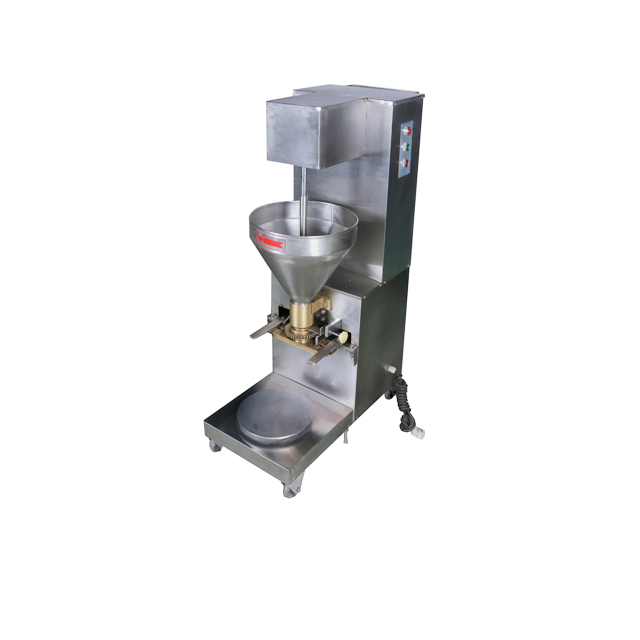Views: 0 Author: Site Editor Publish Time: 2024-10-28 Origin: Site









The art of making meatballs dates back centuries, with each culture adding its own flavors and techniques. Today, meatballs are a popular dish enjoyed worldwide, from Italian-style meatballs in tomato sauce to spiced Asian varieties. For businesses in the food industry, efficiency is key in meatball production, especially when catering to high demand. Producing meatballs efficiently without sacrificing quality involves a combination of proper ingredient selection, precise machinery, and optimized production workflows. This article explores the steps for efficient meatball production, from choosing the right ingredients to leveraging automated equipment, ensuring a consistent, high-quality product.
The answer lies in selecting the best ingredients, using effective mixing techniques, and incorporating specialized machinery to streamline the process. By optimizing each step, businesses can achieve both high output and excellent taste in every batch of meatballs, keeping production costs in check and quality standards high.
High-quality meat is the foundation of any good meatball. Ground pork, beef, chicken, or fish are commonly used, but selecting fresh and appropriately ground meat for your product is essential. The fat-to-lean ratio also plays a critical role in the final texture and taste. Generally, a fat content of around 20% provides the best balance between juiciness and flavor, while a leaner ratio may produce drier meatballs.
The choice of binding ingredients, like breadcrumbs and eggs, affects the structure and texture of the meatball. Bread crumbs help absorb moisture and bind the meat, while eggs provide cohesion. Seasoning, such as salt, pepper, and spices, enhances flavor, making each meatball unique. For efficient scaling, recipes should specify precise ratios, ensuring consistent quality across batches.
Once ingredients are selected, they need to be combined uniformly. Efficient mixing is crucial to ensure flavors and textures are distributed evenly. Traditionally, mixing is done by hand, but in a commercial setting, mixers specifically designed for meat help achieve consistency. These machines not only save time but also ensure ingredients are blended uniformly without overworking the meat, which can lead to tough, dense meatballs.
Automation also offers benefits in adding spices and seasonings. Pre-measured spice dispensers can be programmed to release precise quantities, allowing for greater accuracy and a reduced chance of human error. The goal is to balance the ingredients without over-mixing, which keeps the meat tender while still well-integrated with the other ingredients.

Shaping is one of the most labor-intensive steps in traditional meatball production, making it an area where automation can yield significant time savings. Fully automated meatball-making machines simplify this process, producing uniformly shaped meatballs at a rapid pace. With features like adjustable sizes, these machines cater to different preferences, from bite-sized meatballs for soups to larger varieties for main courses.
Automation reduces labor costs, improves speed, and ensures each meatball is perfectly shaped and sized. This consistency is essential for both aesthetic appeal and cooking uniformity, as similarly-sized meatballs cook at the same rate, reducing the chance of undercooked or overcooked portions.
Cooking methods vary based on the type of meatball and final product requirements. Many commercial kitchens use steam ovens or conveyor-style fryers to cook meatballs in large batches. These methods ensure even cooking while maintaining moisture and flavor. Steaming is ideal for fish and pork meatballs, while beef meatballs often respond well to frying, which adds a crisp exterior.
Batch processing minimizes wait times and increases overall productivity, allowing meatballs to move from raw to cooked quickly. For businesses that freeze meatballs for later sale, blast freezing is recommended. This method freezes meatballs rapidly, preserving texture and flavor while reducing ice crystal formation, which can otherwise cause freezer burn.
Efficient meatball production doesn’t end with cooking; packaging and quality control are equally essential. Proper packaging ensures freshness and minimizes contamination. Vacuum-sealing is commonly used for fresh meatballs, while frozen products can be packed in airtight bags or containers. Automated packaging machines expedite this process, reducing the time between cooking and storage, which is critical for food safety.
Quality control is a crucial part of every production phase. Regular checks for temperature, shape, size, and taste help maintain consistency. Automated machinery with built-in sensors can detect irregularities, helping maintain product standards and catch any issues before they reach the consumer. This investment in quality control reinforces customer trust and helps ensure the brand’s reputation for high-quality, consistent meatballs.
Stabake offers a state-of-the-art Meatball Making Machine designed for businesses aiming for efficiency and quality. This fully automatic machine can produce a variety of meatballs, including pork, fish, beef, and chicken varieties, with flexible texture options and customizable flavors. Its features include a stainless steel body that is food-grade safe, durable, and easy to clean, along with a high-powered, long-lasting motor that ensures rapid, smooth operation. With its anti-leakage switch for user safety and an adjustable mold that allows changes in size and speed, the Stabake Meatball Making Machine is ideal for high-quality meatball production.
If you’re interested in elevating your meatball production efficiency and quality with Stabake’s food machine, please contact us for more information. We can provide specifications, pricing, and details on how our machine can be customized to meet the needs of your business.
Q1: What type of meat is best for making meatballs?
Ground beef, pork, chicken, or fish are commonly used, with a recommended fat content of around 20% for juiciness.
Q2: How do automated meatball machines maintain meatball shape and size?
Automated machines use adjustable molds and shaping mechanisms to produce uniform meatballs consistently.
Q3: Is freezing meatballs immediately after cooking recommended?
Yes, rapid freezing helps preserve flavor and texture, especially when using a blast freezer to reduce ice crystal formation.